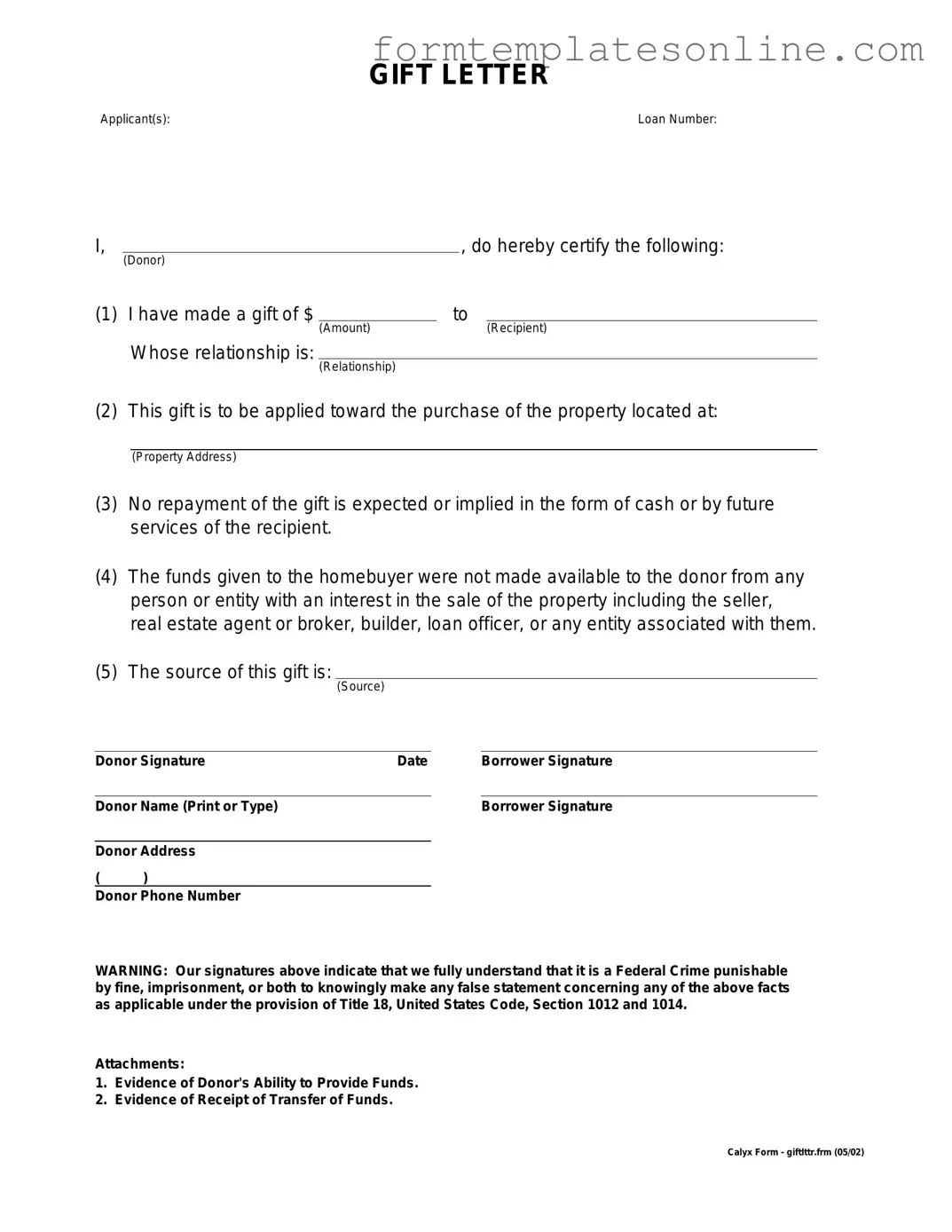What is a Gift Letter form?
A Gift Letter form is a document that outlines a financial gift given to someone, typically in the context of purchasing a home. It serves to clarify that the funds are a gift and not a loan, ensuring that the recipient does not have to repay the amount. This is important for mortgage lenders, as they want to confirm the source of the down payment funds.
Who typically uses a Gift Letter form?
Gift Letter forms are commonly used by homebuyers who receive financial assistance from family members or friends for their down payment. Lenders often require this documentation to verify that the funds are indeed a gift, which can help the buyer qualify for a mortgage.
What information is included in a Gift Letter form?
A Gift Letter form usually includes the names of the donor and recipient, the amount of the gift, the relationship between the two parties, and a statement confirming that the funds are a gift. Additionally, the donor may need to provide their contact information and sign the letter to validate it.
Is a Gift Letter form required by lenders?
While not all lenders require a Gift Letter form, many do, especially if the buyer's down payment comes entirely from a gift. It is always best to check with your lender to understand their specific requirements regarding gift funds.
Can anyone give a gift for a down payment?
Generally, anyone can give a gift for a down payment, but lenders often prefer that the donor be a close family member, such as a parent, sibling, or grandparent. Some lenders may have specific guidelines about who qualifies as an acceptable donor, so it's wise to review those details beforehand.
What happens if the Gift Letter form is not provided?
If a Gift Letter form is not provided when required, the lender may question the source of the down payment funds. This could lead to delays in the mortgage approval process or even a denial of the loan. Therefore, it is crucial to submit this documentation if requested.
Are there tax implications for the donor?
Yes, there can be tax implications for the donor. In the United States, gifts above a certain threshold may be subject to gift tax. However, many people do not reach this threshold, and there are annual exclusions that apply. It’s advisable for the donor to consult a tax professional to understand their obligations and any potential tax consequences.

